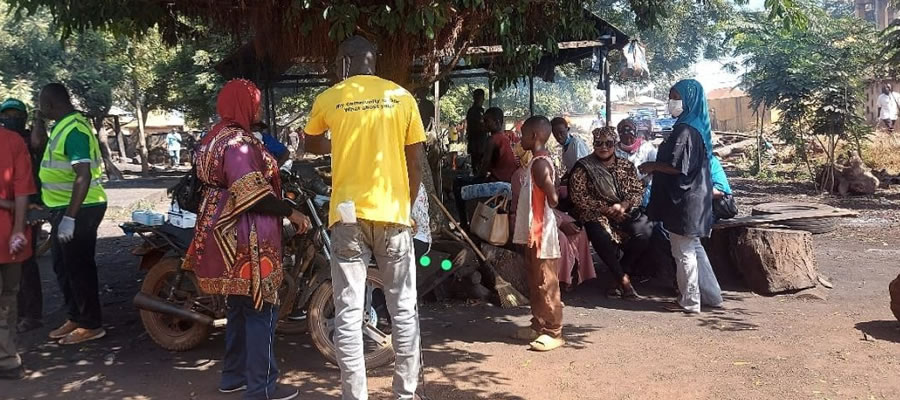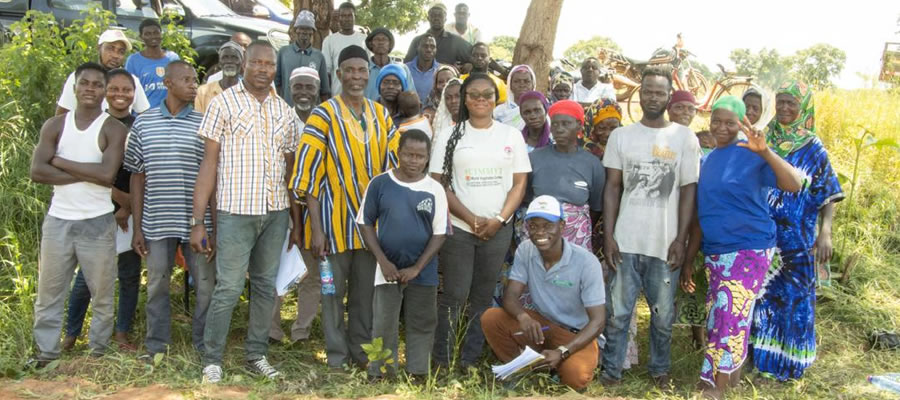
Household Size, Structure And
Composition
Introduction
This chapter presents information on household size, structure and composition. Socio-cultural factors to a very large extent influence living arrangements. There is, therefore, a close relationship between family and household formation with regard to the type of socio-cultural practices that are prevalent in a particular society. The family system in any human society, whether it is the nuclear or extended type, depicts the type of kinship ties that hold the people together.
There are some differences in the composition and size of households among the various ethnic groups in Ghana based on the prevailing kinship. There are two broad descent and inheritance systems – the patrilineal and matrilineal systems. Almost all if not all the ethnic groups in the Northern region practice the patrilineal system of inheritance.
Household Headship
The 2010 census data revealed that the total number of household heads in the Northern region is 318,119, made up of 270,488 male heads and 47,631 female heads. Table 4.1 shows household headship by district, locality and sex. At the regional level, males constitute a very high proportion of household heads (85.5%) compared to females (15.0%).
A similar trend is reflected across the 20 districts in the reion. In the Bole, Sawla-Tuna-Kalba and Tamale districts, one out of every five household heads is female. In both the urban and rural areas, the proportion of male-headed households is higher than that of females. The pattern is the same for all the districts in the region.
Table 4.2 shows the age distribution of household heads. About 60 percent of male-headed households are in the 30-54 years age group. Female headed households in the same age bracket constitute about 50 percent (49.9%). of female headed households. Male headed households aged 15-29 years constitute about 12 percent of male headed households. Females in the same age bracket who are household heads constitute 16 percent of female headed households.
In both the urban and rural areas, household heads are predominantly aged between 30 and 54 years old. Urban areas have more male heads of household (60%) than female heads of household (48.8%). In rural areas, the proportion of female-headed households is slightly above half (50.1%) while the proportion of male household heads is 60.2 percent.
Household Size
The 2010 Population and Housing Census defined a household as “a person or a group of persons, who lived together in the same house or compound and shared the same house-keeping arrangements”. In general, a household consists of a man, his wife, children and some other relatives or a house help who may be living with them.
It is, however, important to state that membership of a household does not necessarily depend on consanguinity or blood ties. The number of persons who belong to a household constitutes the household size. The average household size in the Northern region is 7.7 persons, which is higher than the national average of 4.4 persons. The possible reasons for the large household sizes in the region are polygyny, high fertility and the common practice of nuclear and extended family members living together.
Table 4.3 shows that households with 10 persons or more constitute the highest proportion (28.6%) in the region and in all districts in the region. The Tamale Metropolis has the highest proportion of one-member household (12.9%) compared to all the other districts, probably because of it being the regional capital with economic and social opportunities which attract people seeking employment opportunities
Household Composition
In general, households made up of head and spouse only form a small proportion of the various types of households in the districts. Households composed of the head and multiple spouses only are non-existent in the region.
In three districts, Bole (26.1%), East Gonja (37.7%) and Kpandai (37.1%), households composed of head, spouse(s) and biological/adopted children only are the most common household type in those districts. In the majority of districts, a high proportion of households comprise the head, spouse(s) biological/adopted children and relatives of the head. This is the case for more than 50 percent of households in the Zabzugu/Tatale (51.1%), Tolon/Kumbungu (56.4%), Savelugu/ Nanton (54.8%), Karaga (59.7%) and Gushiegu (54.6%) districts.
Main Source of Cooking Fuel
Table 12.11 shows the distribution of the type of fuel used by households for cooking. In the region, about 76.5 percent of households use wood as the main source of fuel for cooking while 16.4 percent use charcoal and 7.1 percent use other forms of energy. Except for the Tamale Metropolis (29.1%), more than 60.0 percent of households in the remaining districts use wood as their main source of cooking fuel. The Tamale Metropolis also has the highest proportion of households (13.4%) that use
liquefied petroleum gas (LPG).
Cooking space used by Household
A cooking space is a separate room, usually referred to as a kitchen, equipped and intended primarily for the purpose of preparing meals. Table 12.12 shows that 48.9 percent of households in the region use an open space in their compound for cooking, while 29.2 percent use a kitchen either exclusively or shared with other households.
The remaining 21.9 percent of households use other spaces such as the verandah or bedroom for cooking. At district level, the distribution of the types of cooking space is generally similar to that at regional level. Savelugu Nanton District, at 78.2 percent, has the highest proportion of households that uses open space for cooking. This is followed closely by Gushiegu and Saboba where 78.1 percent and 76.7 percent respectively of households use an open space for cooking.
Date Created : 11/28/2017 5:33:50 AM












 facebook
facebook
 twitter
twitter
 Youtube
Youtube
 +233 593 831 280
+233 593 831 280 0800 430 430
0800 430 430 GPS: GE-231-4383
GPS: GE-231-4383 info@ghanadistricts.com
info@ghanadistricts.com Box GP1044, Accra, Ghana
Box GP1044, Accra, Ghana